Bird Watching Tour
Day 1
Late afternoon arrival at Colombo International Airport. Welcome and transfer to Jetwing Lagoon Resort not too far from the Airport.
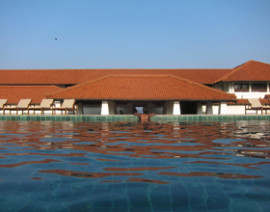
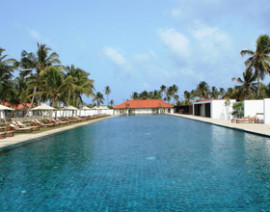
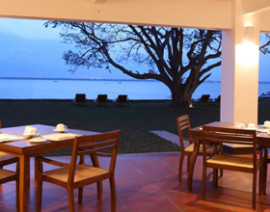
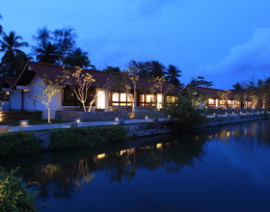
Jetwing Lagoon resort
Welcome and transfer to Jetwing Lagoon resort for the overnight stay. This is one of the great early Geofery Bawa designed resorts now salvaged and restored very tastefully with all four star comforts and opened to the public only very recently. The resort is built, sandwiched between the vast Negombo lagoon and the sea and boasts of one of the largest pools in the Island. A fine mangrove cover skirts the resort and totally engrossed in the prevailing silence, one could sit on the wooden deck facing the fascinating lagoon with one’s favorite cocktail at hand and watch the wavelets lapping the deck ever so gently. The amazing laid back ambiance will be a fine beginning to the pearl of the Indian Ocean and Mr Geoffrey Bawa.
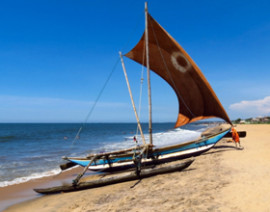
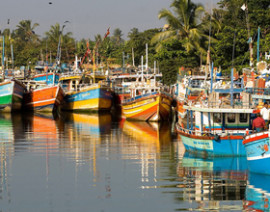
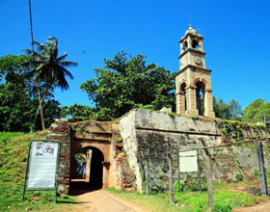
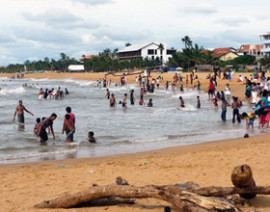
Negombo
Negombo is a former Portuguese and Dutch colony and is one of the main fishing habours of the Island. A morning visit to the lagoon- mouth will thrill you to the limit when ancient catamarans and modern motor boats return cheek by jowl to the shore after competing for their night’s catch. The ensuring chaos of sorting, buying and selling with torrent of bargaining will surely leave a visitor spellbound by the coarse exchanges itself not to mention its heart-stopping seaside character. You could also visit the vast beach of the cape they use for drying fish if only if you could bear the stench. But it’s rather educational. In addition to the prominent activities at the lagoon-mouth and the shoreline, Negombo boasts of some of the finest Catholic Churches in the Island. Alluringly, some date back to the 18th century. You will also be driving along the tourist colony where hotels, guest houses, restaurants, pubs and sea-food outlets dress up the road side making the famed colony fabulously bright and ever so gay.
Dinner and overnight at Jetwing Lagoon Hotel.
Day 2
We leave for a boat safari at Muthurajawela wetland with packed breakfast. It is better if the group can leave the resort by 0600 AM. During the safari your boatman will navigate along narrow channels of water and through leafy mangrove swamps which is one of the largest close to the city of Colombo. The swamps are home for numerous species of aquatic birds that belong to the families of herons, bitterns, egrets, storks, cormorants, darters and teal. An occasional bird of prey may show up to pounce on a betraying movement beneath the clear water! In addition water monitors, otters, tortoises and even estuarine crocodiles that are essential part of the habitat have been recorded. Elusive fishing cat is another that frequents the mangroves.
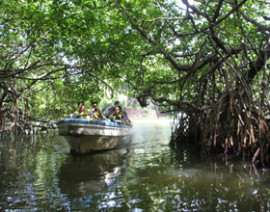
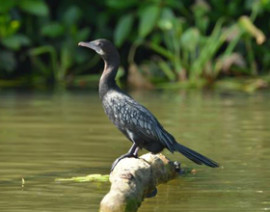
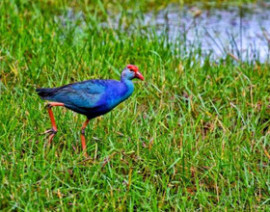
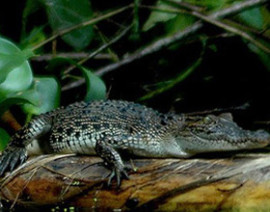
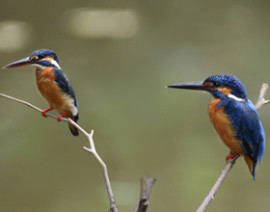
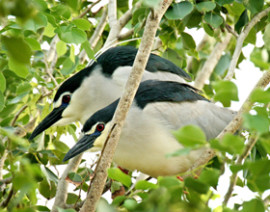
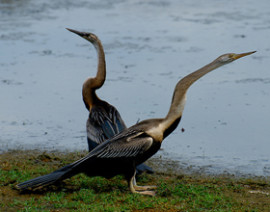
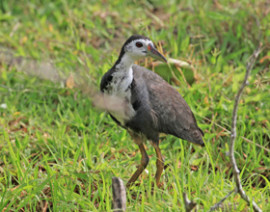
Afterwards we travel inland bypassing the city of Colombo towards the Sinharaja Rain Forest .
The journey will take you through the gem country Ratnapura where you could stop by at a gem-pit briefly to
study the art of gem mining. You may find the methods quite primitive but it is what the natives believe in and
they are successful with.
Lunch enroute.Evening bird watching around Martin’s Lodge which is at the foothill.
Day 3
Full day explore Sinharaja Forest for bird watching.
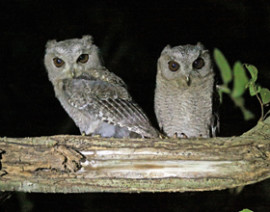
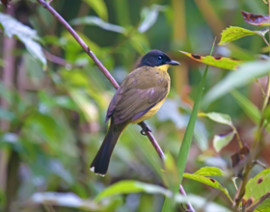
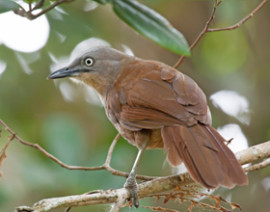
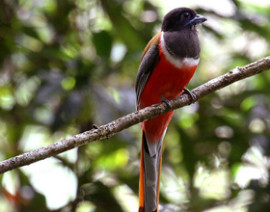
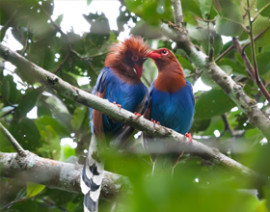
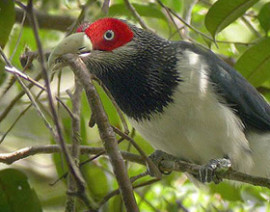
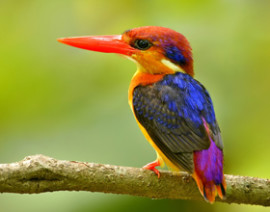
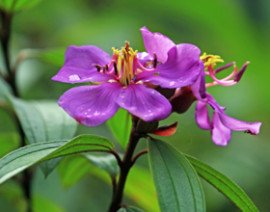
Singharaja rain forest
Here we are at the great rain forest home for many exotic endemic birds, butterflies, dragonflies, fish in addition to some rare mammals found in the island including the leopard. Most of all it is a treasure trove for nature lovers and botanists as thousands of plants, trees, creepers , flowers that include many types of rare forest orchids are not found anywhere else in the world. The forest spreads from peak to peak covering a vast area connecting three districts and two provinces. Notably, sun light hardly proliferates on to the forest bed due to the existence of many canopy levels and incessant rain or perpetual drizzling is experienced within the forest during most parts of the year. Rain at times can pour in bouts and could be very heavy to soak you profusely in no time. Therefore, a rain coat is a must in the paraphernalia you carry in your sack.
The hike passes many rivers, pellucid brooks, limpid rock pools and gushing waterfalls as you venture deep into the jungle. Twenty three of the twenty seven species of birds endemic to the island live here and are mostly found in feeding flocks. This include the colorful blue magpie and the Ceylon trogan, the primitive red face malkoha and the elusive chestnut back jungle owlet and the Ceylon frogmouth which are considered price sightings for keen bird watchers. Animals are hard to find due to the thick forest cover and also due to their nocturnal habits but the unique vegetation with its unbelievable contrast to the rest of the country, is something you should not miss.
Day 04
Leave for Udawalawe National Park after breakfast on a 3.5 hour drive. Upon arrival at Uda Walawe National Park commence a safari by jeeps.
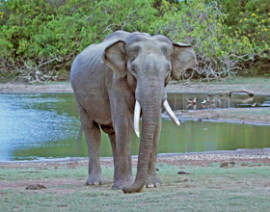
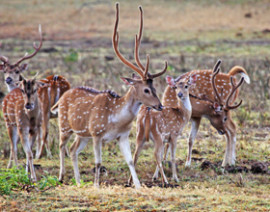
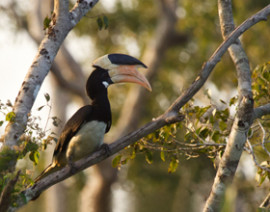
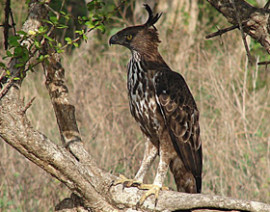
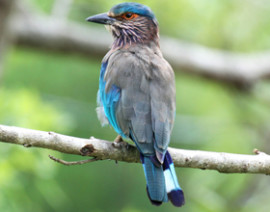
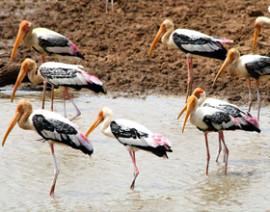
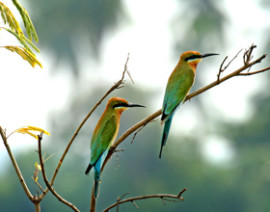
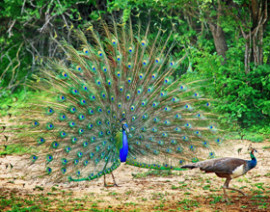
Uda Walawe National Park
Uda Walawe National Park situated in the Southern Province of the Island and is within the arid dry zone of Sri Lanka that receives little rain fall in contrast to the wet zone where Colombo is situated. This park is considered to be one of the best spots to view and study the Asian elephant. It consists of a declared area of virgin forests you’ll find grown so freely on the banks of a flowing river that finally empties into a great lake; one of the largest in the island. Surrounding the lake, there are vast plains stretching for miles and miles and the plains become much sought feeding grounds for grazing animals after the monsoon rains. This includes some of the largest herds of elephant in Asia; at times exceeding two hundred in number. In addition you could come across all other mammals that live in Sri Lanka but locating leopard and sloth bear would turn out to be a difficult task; the former due to its strict nocturnal habits in the plains and the latter who prefers the inaccessible rocky outcrops to plains. Other mammals include many types of deer, elk, jackal, pangolin, types of mongoose, crocodiles and monitors, wild boar and wild cats. Peacocks and the National bird; the jungle fowl found in abundance add color to the green plains. Park is famous for sightings of rare birds as well, including many types of birds of prey; both resident and migratory. One cannot forget to add the scenic beauty of the park as one could watch the towering mountains over the plains from many angles. Sun sets are so panoramic and at times elephants present themselves in silhouette in the back-drop of the gloriously setting sun. Afterwards proceed to Tissa on a further hours’ drive and check into The Safari Hotel.
The Safari Hotel
This fascinating 4 star property is located at one of the most picturesque sites where a British built colonial rest house once stood. It is found just walking distance to the great Tissa temple and is a much sought after property by high-end tourist who visit the Deep South to cover the Yala National Park and the historical Kataragama shrine.
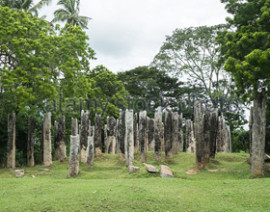
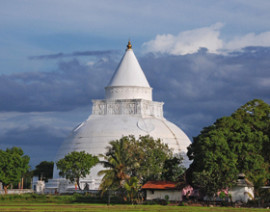
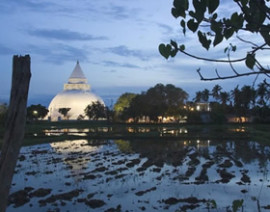
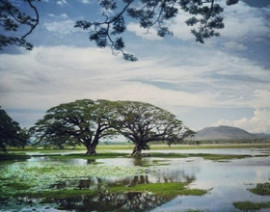
Tissamaharama
Upon arrival at Tissamaharama you will notice the two most important landmarks; the fascinating Tissa Lake with its forest clad banks and in the backdrop the great Tissa Temple built by the kings 2,200 years ago. There is a lovely uninhabited island in absolute wilderness in the middle of the lake and you could watch aquatic birds in their hundreds flying in formations to roost in it. If you dare to wander around, you could watch Kataragama shrine bound pilgrims bathing to their heart’s content at a safe location in the lake, continuing an age-old tradition. Their busses, Lorries, vans, tractors and at times carts are parked close to the bund and the thrilling prospect of watching them enjoying their bath with their extended families and friends in the shallow waters will thrill you to the limit. The character presented at this noble ritual is part of the Deep South culture. Dinner and overnight at The Safari Hotel.
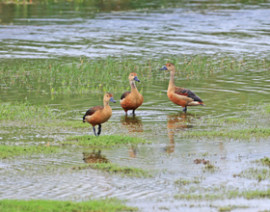
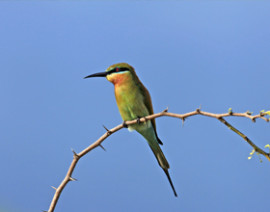
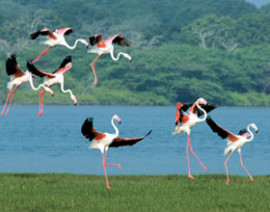
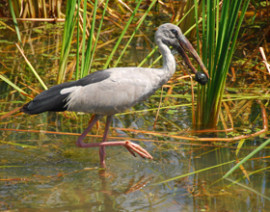
Bundala National Park
Bundala is considered to be the best wetland in the Island for bird watching. The cluster of large lakes, mostly of brackish water and the arid forest cover attracts thousands of migratory birds from Europe and Northern Asia during the European winter. In addition, a large number of resident aquatic birds, roost and nest in colonies in this bird watcher’s paradise. A network of jeep tracks will take a visitor from one lake to another through the arid and thorny bush-land unfolding from time to time, colonies of waders and flamingoes feeding in the plant rich shallow waters. The park boarders the remote Indian Ocean on one side and its endless sand dunes attract rogue elephants those are found to be fond of salt. Your jeeps will tackle some of the most inaccessible territories within the park with great daring drives to explore some unbelievably remote and indescribably unique coastal landscapes amidst the towering sand dunes. Among many other mammals, the park has a large population of estuarine crocodiles, living in the stretched out mangrove swamps. Lunch at Tissa.
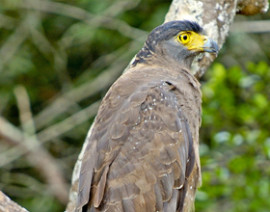
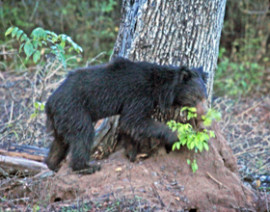
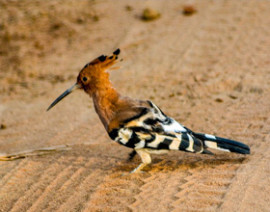
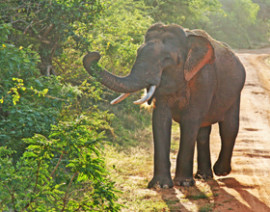
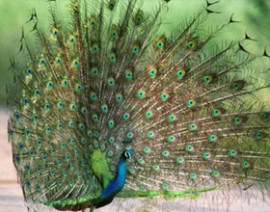
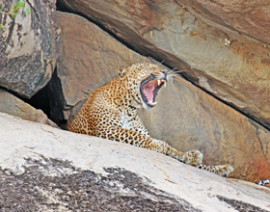
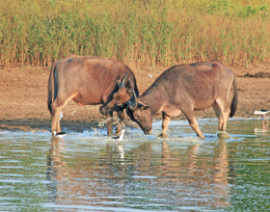
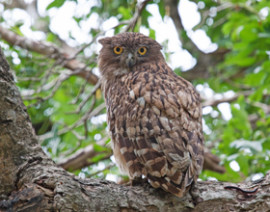
Yala National park
Yala the largest National park in Sri Lanka is situated in the remote South Eastern corner of the Island and covers more than 400 Sq Miles. This park is renowned as the best in Asia for sightings and photography of the Asian Leopard and the Sloth Bear. It is considered the area that has the highest density of leopards in the world. The landscape varies from massive and artistic rock formations in a thorny arid setting to lush evergreen virgin forests on the river banks. Whilst it boasts of vast parklands where elephant, deer, elk, wild buffalo, wild boar and black nape hares graze freely, it is also the hunting grounds of mongoose, jackal, civet, otter and the fishing cat for prey. Many birds, aquatic and other types can be viewed at numerous water holes and picturesque lakes of the park presenting breathtaking natural settings of fascinating beauty. Colorful peacock and the National bird, the ever so graceful jungle fowl steal everything else. Very rare species of birds, both resident and migratory, have been recorded and filmed at Yala by reputed wild life photographers. The great Indian black neck stork, the largest bird in Sri Lanka would be considered a price catch for it is earmarked for extension as only less than ten birds have survived and that too only at Yala! Dinner and overnight The Safari Hotel, Tissa.
Day 6
Leave for Nuwara Eliya after breakfast. En route free for some bird watching at the Deboraweva tank and some other notable sites
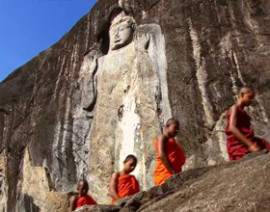
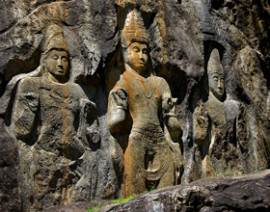
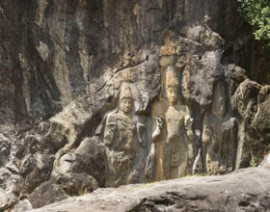
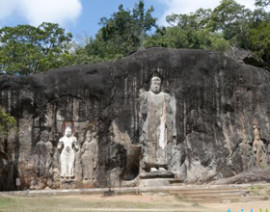
Buduruwagala
Buduruwagala rock carvings of the 8th century. Also a great bird watching site..
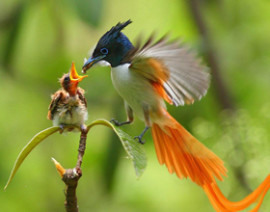
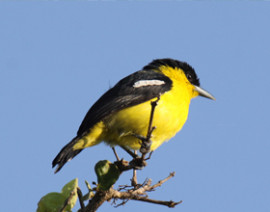
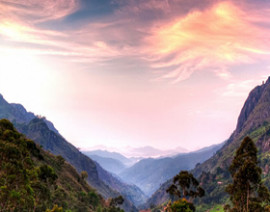
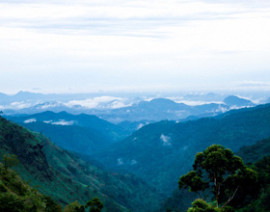
Ella
En route stop at the scenic Ella Rest House for lunch. This is the location where through two gigantic rock boulders you could watch the glittering waters of the Indian Ocean 60 miles away thus presenting a magical view of unspoiled nature. The British who ruled the island for 150 years spotted this most amazing wonder of nature and built a colonial rest house at the location over hundred years ago. Part of that charming building is still preserved for future generations to discern the splendor of those grand colonial times. Their beautiful garden where colouful roses still bloom is only a little this side of heaven. You could also stop at the majestic Rawana Ella Falls that cascades down a long way along a rocky precipice into a deep pool.
Upon arrival check into Galway Forest Lodge.
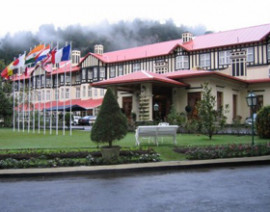
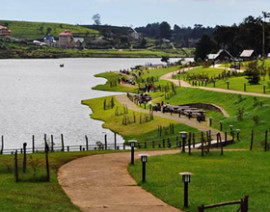
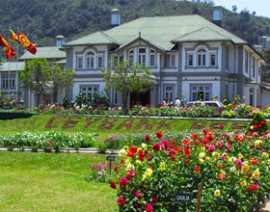
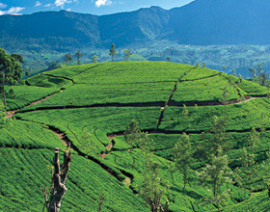
Nuwara Eliya
In the month of April all English flowers bloom in abundance in the immaculately maintained gardens of Nuwara Eliya. During your stay you could visit the Hakgala Botanical Gardens which is a treasure trove for botanists. You’ll also get to identify most of the hill country birds. Nuwara Eliya; the capital of tea country resembles a small Scottish town with its classic Victorian and Tudor style buildings and is ably backed by a salubrious climate. British built this town less than two hundred years ago as a spot of entertainment for their planters. They built a great 18-hole golf course, a grand horse racing track, irresistible club houses with wooden dancing floors, sprawling tennis courts, lovely little villas and a beautiful lake in the middle of all that which they stocked with trout so that planter families could come on horseback from the nearby estates to spend the weekends in style. For most at the time, the alluring township may have been closest to their homes so far away.
Towards evening we could visit the Hakgala botanical gardens or the Galway nature reserve for bird watching. Dinner and overnight at Galway Forest Lodge, Nuwara Eliya
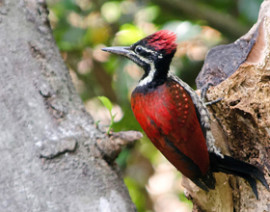
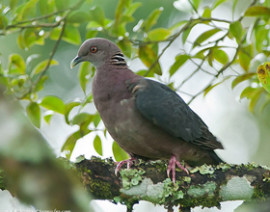
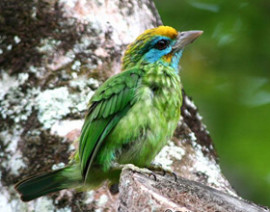
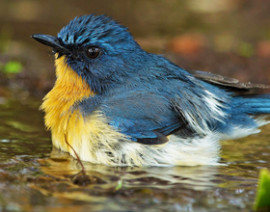
Day 07
We leave for Horton Plains National park by jeep or in small vans with packed breakfast.
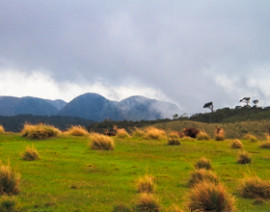
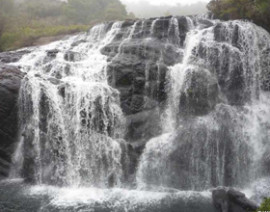
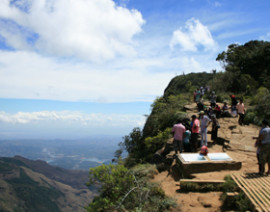
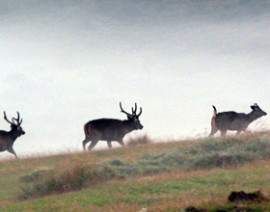
Horton Plains National Park
Early morning leave for Horton Plains National Park with packed breakfast on an optional trip. The journey involves a further tedious climb before you reach the park entrance and may have to be done by jeep or van depending on the state of the rugged road. Upon reaching, commence the eight KM hike on a treacherous foot path across the vast plain that is set in a unique setting at 7000 feet above sea level which is an absolute wonder of nature. The plain is home for large herds of sambhur(elk) and in the early morning you can watch the herds feeding on the shoots of rich grass and reeds; one of the main characteristics of the plain. Forests around the plain are described as tropical temperate and are grown to withstand the vehement night storms and cold monsoon winds that sweep the high plains every now and then. Half way during the hike you will come across the famous drop that is called the “world’s end”; a gorge that is over three thousand feet deep. On clear days one could watch the life in miniature form at the foothill of the gorge which belongs to an entirely different district, accessible only after a near six hour drive! Later on you’ll descend down a steep precipice where now stands a great deck, so that you don’t break your bones challenging the perilous slope, to watch the breathtaking Bakers Falls cascading over a massive rock before plunging in to a deep limpid pool presenting an awe-inspiring view. In addition to its unique flora, the National Park is home for very rare mountain birds including the endemic “arenga”; the whistling thrush and the majestic mountain hawk eagle. The one-horned lizard, the bear monkey and some toads not to mention many insects, butterflies and dragon flies too are endemic. The park also has a sizeable leopard population but sightings are very rare due to their elusive nature during the day time.
Afterwards proceed to Nuwara Eliya for lunch and then leave for Kandy. The drive is one of the most scenic in the island and the road winds as you descend to an elevation of 1,500 feet from 6,500 feet above sea level. During the 3 hour drive you will be passing some great tea plantations, mist shrouded mountain peaks, gushing waterfalls cascading into limpid rock pools, lush rain forests in which runs pellucid brooks and a vast man made reservoir found in a deep valley that producers hydro electricity for the Islanders. En route you can stop at the Labukelle Tea Factory where you will get to learn about the process of drying tea leaves. A walk among the fine tea bushes systematically laid on mountain slopes with its fine aroma will thrill you to the limit.
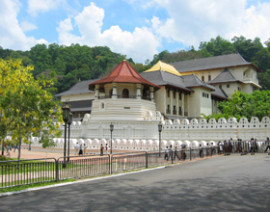
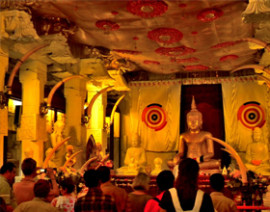
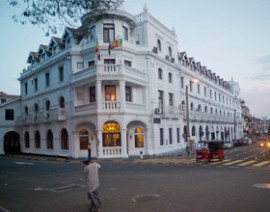
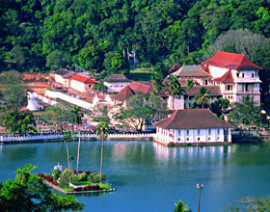
Kandy
During your stay you could explore the ever so quaint Kandy; the last Kingdom, visiting the temple of the sacred tooth relic; the most important place of worship for Buddhists world-over at which place you’ll get to participate in a colorful ceremony to the tune of the Eastern tom toms. It will be full of culture and timeless ritual. At 0530 PM you will be in an audience to watch the traditional cultural dance, actually a symbolic glimpse at 2500 years of heritage!
You’ll also visit the upper lake area to catch a bird’s view of this fascinating lake city and the great temple cluster that is declared as a world heritage site now. A visit to the botanical gardens will thrill you for it is the only one of its kind in this part of the world. Being the pleasure gardens of the Queen once and found hugging a shaded river, you could stroll in the shade of great trees for hours passing manicured lawns and lovely flowering shrubs in an absolute tranquil setting. A visit to the famous orchid house is a must for orchid lovers. Evening, one could walk around the Kandy Lake and along its paved paths with the great Temple in the back-drop enjoying the cool breeze flowing freely from the distant hills. Kandy being the last Kingdom offer valuable souvenirs in handicraft and gems. Sri Lanka is the only country in the world in which world famous blue sapphires are found in its pure original form.
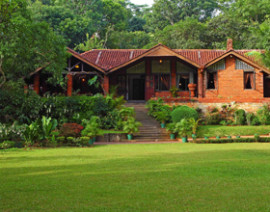
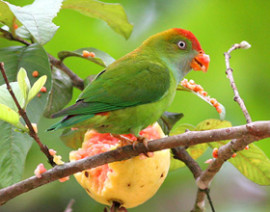
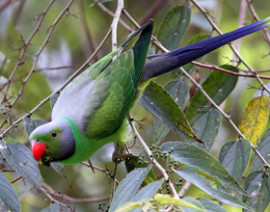
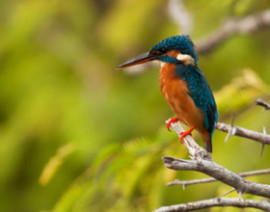
Tree of Life Hotel
There is no better hotel in Kandy for bird watchers!
Day 08
We travel to Sigiriya at leisure. En route we stop at a spice garden and the Dambulla cave temple.
